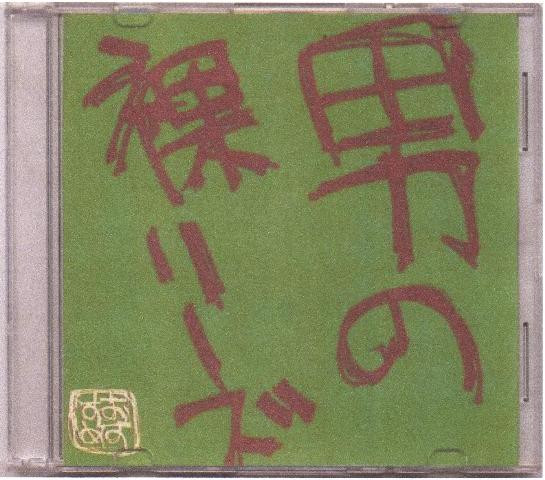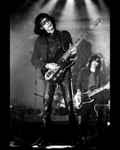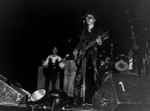男の裸リーズ - Otoko No Hadaka Rizu 緑
Table of Contents
Download
Filename: otoko-no-hadaka-rizu.rar- MP3 size: 6.2 mb
- FLAC size: 103 mb
Tracks
| Track | Duration | Preview |
|---|---|---|
| ? | ||
| 82.10.2 |
Images

Catalog Numbers
FND-SI-003Labels
CragaleListen online
- ascolta in linea
- ouvir online
- écouter en ligne
- lyssna på nätet
- online luisteren
- kuunnella verkossa
- lytte på nettet
- escuchar en línea
- online anhören
Formats
- CDr
- Unofficial Release
- Compilation
- Promo
Notes
Promotional CDr given away with purchases of other CDrs on Cragale. Catalogue number is stamped onto disk surface.About 男の裸リーズ






ࣸnéêüº (Hadaka No Rarīzu / Hadaka No Rariizu) were a Japanese experimental rock band formed in November 1967 at Doshisha University in Kyoto, then moved to Tokyo, led by . Performed their last gig in October 1996. Outside of Japan they are commonly known as as Les Rallizes Dénudés (ìûéêüºûÇËåÇ), Hadaka No Rallizes, The Naked Larryz, or Fucked Up And Naked. The band is primarily known for their experimental nature, pioneering of the noise-rock genre, and the mysteriousness of their frontman, .
In November of 1967, Takeshi Nakamura met Takashi Mizutani at the Light Music Club in Doshisha University. Mizutani had interest in many rock artists, from psychedelic bands like 13th Floor Elevators, Jefferson Airplane, and The Grateful Dead, heavy psych / proto punk bands like Blue Cheer, The MC5, and The Stooges, progressive rock bands like Pink Floyd, Hawkwind, and Gong, to contemporary Japanese bands like Jacks, and even experimental bands like The Velvet Underground, The Fugs, and The Mothers Of Invention. Free jazz was also a component. Mizutani's instrumentation and songwriting was also heavily inspired by French culture and artists, particularly in avant-garde concepts and poetry.
Both Mizutani and Takeshi were interested in forming a rock band but needed to find a bassist and drummer. Searching on campus, they found Moriaki Wakabayashi and Takashi Katoh who agreed to join. From the very beginning, the concerts were very loud, and mostly focused on improvisation. Moriaki had never even played any instruments before, but to the band the philosophy and feeling of the music was more important than technical skill.
When the band entered a studio in 1968 however, they decided to take a different approach, focusing on a folk-garage rock sound. However, the live shows largely stayed the same, and were still usually louder and wilder than the studio sessions. Later in 1969, the band broke up and Mizutani briefly acted on his own. Soon, he met a bossa nova musician, Makoto Kubota, who recorded an amateur studio session with Mizutani within the University and eventually joined the band. By the end of 1970, the band had moved away from the acoustic sound.
Over the next 3 years, the band developed a traditional rock sound, one unique in that it had little blues influence. The sound was alike many bands that played alongside them, but the lyrics and soloing were different. Mizutani's songwriting began to blossom from romances or short poems to cryptic and absurdist pieces, often focusing around blood, oceans, angels, the color black, and the night. In the early 70s, Mizutani sometimes opted for a "la-la-la" chorus instead of a solo, but this stopped around 1974. Guitar solos were focused around feedback, which was uncommon for the time.
In 1975, Mizutani began utilizing droning feedback, guitar effects and unique lyrics to create what many regard as early noise-rock, although the band still had folk and garage roots. The experimentation was gradually amped to a new level, as concerts became even louder and the band started regularly using elaborate light shows to enhance concerts.
In 1978, with punk and other experimental forms of rock now very prevalent, the band started to incorporate folk and blues elements back into the music while still keeping the volume high. This resulted in a major change in the sound. In 1980 and 1981, a collaboration with Fujio Yamaguchi as a "second frontman" made the band's blues influence much more pronounced as Fujio had been involved with many traditional rock bands beforehand. After Fujio's departure, this influence disapated.
In 1988, the band split apart for a few years in which Mizutani took a break from music and moved to Paris. 3 years later in early 1991, 3 official CDs were released under the Rivista moniker, and in 1992 an official movie was released on VHS of various live recordings from the 70s and 80s, some accompanied by footage. The movie was released under the guise of a French filmaker named Ethan Mousike, however in recent years this has been revealed as an alias of Mizutani. Both were the first time any live recordings from the band had been properly released, however many tapes had circulated in Japanese trading circles since the late 1970s, and a studio session had been released in the form of an obscure private press compilation in 1973.
In 1993 Mizutani moved back to Japan. The band reformed and started performing at small clubs around Japan until 1996, although there audience was only slightly bigger. Mizutani would be seen again in 1997 performing with the band Shizuka, and later collaborating with free jazz artist Arthur Doyle to make an album. After this, Mizutani disappeared from public eye and lived privately in Kyoto. Mizutani would never publicly be heard from again, and was only known to be alive from rare phone calls he made with other Japanese musicians.
In the years that followed, dozens of bootleg CDs and vinyl records circulated throughout the world, all sourced from a supposed wealth of tapes owned by a user on Yahoo named "dizastar009". The identity of this user is unknown, although considering the massive amount of rare recordings they had collected it is speculated to be a former band member or affiliate. Many of these bootleg CDs were once thought to be semi-official, however according to The Last One Musique (the official company made after the death of Mizutani) they are all unofficial.
The band was mentioned in the popular book "Japrocksampler" by Julian Cope, in which he gave a detailed "account" of the band's activities, in which he claimed (among other things) Mizutani hid in the mountains of Japan, only occasionally played shows, and was followed by Japanese federal agents. This "account
Real Name
- ࣸnéêüº
Name Vars
- Hadaka No Rallizes
- Les Rallisez Denudes
- Les Rallizes De' Nudes
- Les Rallizes De'nudes
- Les Rallizes DeNudes
- Les Rallizes Denudés
- Les Rallizes Dé Nudés
- Les Rallizes DéNudes
- Les Rallizes DéNudés
- Les Rallizes Dénudes
- Les Rallizes Dénudés
- Rallizes
- Rallizes Dénudés
- Էnࣸêüº
- ࣸnéêüº
Members
- Makoto Kubota
- Yoshio Kuge
- Maki Miura
- Hiroshi Nar
- Yokai Takahashi
- Toshiro Mimaki
- Takeshi Nakamura
- Takashi Mizutani
- Kato Takashi
- Tada Takashi
- Fujio Yamaguchi
- Shime Takahashi
- Shunichiro Shoda
- Mikio Nagata
- Noma Yukimichi
- Oiwa Osamu
- Takada Kiyohiro
